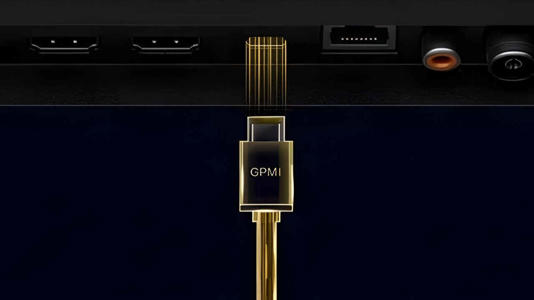Such a circuit convergence is considered a step ahead of HDMI, USB-C, and DisplayPort, which were developed in the West.
Actually, the device connection is said to have been redefined, as the bandwidth rendered is 192 Gbps, while power delivery touches 480 W with a single cable.
Which and Where is The Under Current?
Behind such a latest feat is the coming together of 50 Chinese agencies and such is hailed as the way forward in the pursuit of device connectivity which would rewire the device connectivity paradigm and weaken the reliance on Western-made interfaces.
How Did The Idea Perceive?
Behind the scenes, we find Shenzhen 8K Ultra High Definition Video Industry
Collaboration Alliance, a union of 50+ tech companies in China which also has prominent players like TCL, Huawei, Hisense and Skyworth.
They began working on the project in 2019 and their efforts reaped fruits in the form of connectivity solutions of next-generation.
Following years of industry collaboration and tech advancement, GPMI has progressed from concept to reality.
This technology got the authorization in December last year and was awarded an assigned SVID (0xFF10), as it crossed a big milestone that paved the way for smooth integration into the Type-C circuit.
This was in February this year that Alliance resorted to officially publishing the group standards in five series and called it “General Purpose Multimedia Interface Specification”.
With this, China has set up a cohesive, standardized and futuristic framework favouring a multi-media system in its own right.
Technical Details and Capabilities: Tech News updates in India
GPMI comes in two flavours and such are designed for overarching advancements over the current norms.
The latest development is said to be compatible with the USB-C standard which we have now and therefore, can fit into the present-day device framework.

With 96 Gbps, the bandwidth is pretty impressive as it is more than 2 times the 40 Gbps limit given by USB4 and Thunderbolt 4), while the capacity of power delivery is 240 W which is similar to the Extended Power Range Standard of USB-C.
What About the GPMI Type B Connector?
Here, a design of a 192 Gbps bandwidth (which is 4X higher than HDMI 2.1) and a power delivery capacity of 480 W, which is more than sufficient to run top-tier gaming laptops.
Here the larger proprietary GPMI Type-B connector pushes the frontier even farther.
Clearly, this underlines its usability for critical uses and use cases where there is a need for substantial power delivery and immense data throughput.
As such, we can utilize a single cable for transferring video, music, data and power as the tech is designed to support bidirectional communication functionality.
As a matter of fact, its standard framework has an initial data link which can be installed in multiple ways to give space to distinct use-cases.
Further, GPMI also executes ADCP, which is an alternative to protect content as well as HDCP which resembles to hardcore national security algorithm of China (SM 3 and SM 4) and it ensures rapid connection than on any other protocol.
There are many use scenarios where GPMI has found its favour and this results in prominent enhancements to system setup as well as user experience.
GPMI greatly shrinks cable complexity when it merges data transfer, networking, control signals, power delivery, and the transmission of audio and video through a single interface.

With such a framework, which is an all-in-one method, we have connectivity of many devices with one cable and can deny multiple connections that are frequently needed in such a setup.
For example, for the purpose of giving power to a gaming laptop, a single GPMI cable is needed and we are saved from using multiple cables.
Quick Fix Support In GPMI: Tech News Updates in India.
Content measuring eightK which consumes a big chunk of data (say 16 times more) of 1080p resolution and four times that of 4K, finds a swift support by GPMI, thanks to its high bandwidth.
No doubt, such is most preferred for the displays and futuristic content.
Also, innovative applications are also easy to make through its mainstream bidirectional features, such as the devices connected by controls, such as set-top boxes with a TV remote.
The daisy-chain networking ecosystem finds tremendous support here which would allow multiple gadgets to get serially linked by a single line.
Clearly, the cost of installation will be hugely reduced for multiple machines such as home entertainment systems (linking speakers, game consoles) as well the digital display panels put outside.
Further, the GFMI also has a control standard which bidirectional and supports device reverse control empowering game enthusiasts to manage mobile games on television.
To achieve this, they make use of TV remote or any third-party controllers with which, they are able to augment the small framework of a mobile to a larger TV canvas.
Comparison With Current Norms: Tech News Updates in India

The capability of GMPI differs from the Western connectivity standards and such difference is quite prominent.
As against HDMI 2.1, which augments the bandwidth to 48 Gbps sans power supply designs, HDMI 201 TMDS unleashes 18 Gbps only.
Further, the power delivery is set at 240 W and for bandwidth, it is 80 Gbps,
DisplayPort 2.1 UHBR20 has emerged as the potent and popular Western standard ruling the market as of now.
On the other side of the spectrum, GPMI Type-C supersedes DisplayPort’s wherewithalls but it ensures capability with the USB-C ecosystem by opening 96 Gbps bandwidth while the current delivery is at 240W.
Now, at 196 Gbps bandwidth and 480 W power promise, the GPMI Type-B is said to have surpassed DisplayPort 2.1 as its speed is more than double and the power delivery design is also of double potential.
Undoubtedly, the GPMI enjoys a technical edge over Western standards, thanks to its high performance which is a boon for applications that call for significant power designs and quick data throughput.
A big advancement in connectivity tech is exemplified by its capacity to transfer the 8K video through a single cable while unlocking enough power for high-end computers.
Despite such remarkable characteristics, the GPMI design had numerous obstacles preventing its swift implementation.

Nevertheless, the chances are high that the Chinese brand may find more foes than friends in the Western world.
But for such a purpose, this will be the swiftness at which the dominant gadgets will align with the technology and its compatibility with the existing cable scenario and accessories, that will determine its growing demand as well as acceptance outside China.
However, over time, many of the GPMI’s critical benefits would prepare the ground for its mass adoption. For example, it’s capacity to minimize the cable mess as well as the e-waste which is accomplished after mingling power and data delivery.
Discount this, the GPMI Type-C is found to be immensely interoperable with the USB-C which we use today and therefore, it can become another compelling factor for its wider adoption, in the coming months.
If GPMI would mark a new change, such would be an interesting factor to note, in regard to connectivity standards spanning the globe or would it be confined to be a technology solely serving the Chinese domestic market as it swells and slips into the world?
Whichever the case is, such an evolution hugely illustrates China’s expansive tech dominion and its ambition to take a leap in designing the core tech versions that would support the global society, linked globally.
Well dear reader, please stay connected to us as we endeavour to bring forth the latest and critical info to you.






